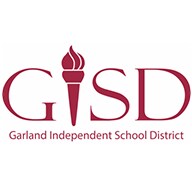Ongoing community need
Every year, the USDA reimburses schools across the nation for billions of meals served to students. During normal school operation, Garland ISD Student Nutrition Services uses PCS Revenue Control Systems to supply reports for the National School Lunch Program. When school is out of session, they track meal counts via paper sheets for the Summer Food Service Program. Meal counts serve as a quantity guide for ordering food and supplies and affect the speed with which funds are reimbursed to the school districts.
Continued nutrition services
To meet the needs of its students and communities, Garland ISD continued delivery of essential services, including meals, during the COVID-19 pandemic. The district’s Student Nutrition Services prepared close to 36,000 meals per day to be distributed from 33 schools in Garland, Rowlett and Sachse, locations designated through guidelines from the Texas Department of Agriculture. Children up to age 18 received a free breakfast and lunch for every weekday from trained personnel, regardless of whether they attended schools in the area.
When the USDA approved distribution of meals under the summer program in response to the coronavirus emergency, Garland ISD—along with other school districts across the nation—defaulted to its existing procedure for summer reporting. The manual method posed challenges: “As soon as you start going outside of schools to serve meals, you don’t have the point-of-sale machines or any of the utilities to collect this information,” explained Dusty Swan, Director of the FORMS Division for PCS Revenue Control Systems. “School districts normally use paper tally sheets for recording summer program meals and touching paper has become a problem.”
Furthermore, social distancing and protective health measures presented limitations for distribution with a reduced workforce. Jason Hickman, technology coordinator with Garland ISD Student Nutrition Services: “It’s been a drastic change for everybody. Now, we have less people at the school, handling everything curbside and we’ve reduced distribution to three days a week.” As a result, each distribution covers multiple meals, such as a hot lunch for the day of pickup as well as a breakfast and a cold lunch for the following day along with instructions for how to store and reheat items. Staff members needed a simple and safe way to track data required by the USDA.
Curbside counting
To guarantee accurate tracking for federal funding, Garland ISD turned to technology. Within days of transitioning to curbside meal delivery, the District began tracking and reporting data with an easy-to-use application offered by PCS, built with OpenText™ LiquidOffice™. Entering meal counts into a convenient digital form, on a phone, tablet or PC, district personnel avoid handling paper and reduce the turnaround to receive reimbursement for meals. The solution supports continuation of a vital and comforting service for students during an uncertain time.
During the crisis, PCS developed and distributed the Feed the Kids application to districts free of charge. Though PCS also reduced its workforce in response to the pandemic, Dusty and Becki Swan, Director of Sales for PCS, formed a lean husband-and-wife team to build the site quickly using a familiar solution: OpenText LiquidOffice for omnichannel data collection and forms automation. “LiquidOffice has a unique design utility with drag-and-drop,” noted Dusty. “We pulled it together with absolutely no coding of any kind and went live in three days.” Though her expertise focuses on point-of-sale solutions, Becki said the forms automation solution proved intuitive: “I learned how to build a LiquidOffice form in five minutes,” she noted.
PCS donated the Feed the Kids application to ‘school lunch heroes’ across the United States through emails, social media and other methods, said Becki. “The sign-up process is quick and easy for districts to use. We have a workflow built in… once approved, it automatically sends an email with all instructions on how to use the forms and the site.” Though the solutions provider conducted training webinars, many district staff members mastered the system without training. “The process was very easy,” Hickman concurred. “I set it up as a test on Sunday and let everybody take a look at it… by that Tuesday, they were all on board and we started running with it right away.” He noted Garland ISD’s business coordinator was able to enter counts from previous days, since the process improved tracking and stores centralized data.
 Garland Independent School District
Garland Independent School District



